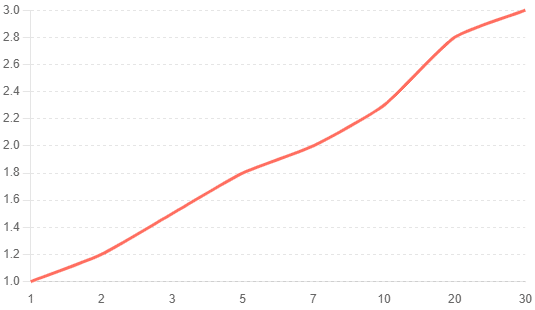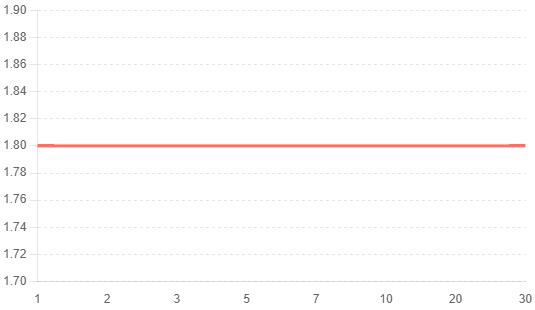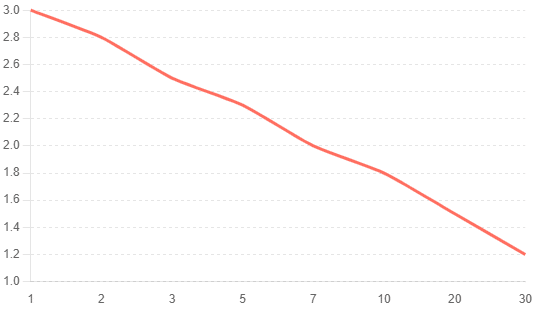If you ask most people what the secret to a successful retirement is, you might hear answers like “save early,” “invest in the right stocks,” or “work with a good financial advisor.” All great advice. But there’s one strategy that often gets overlooked because it’s not flashy, it’s not new, and it won’t land you on the cover of Forbes. That strategy? Diversification.
Let’s be honest: Diversification isn’t exciting. It doesn’t come with big headlines or viral TikToks. But if you’re heading into retirement (or already there), diversification could be the very thing that helps you sleep at night when the markets get bumpy. And that’s worth talking about.
Today we’re going to break down why diversification is more than just a buzzword, it’s a lifeline. We’ll look at how it works, why it matters more in retirement than during your growth years, and how to use it strategically to protect your hard-earned assets.
Listen Now:
iTunes | Spotify | iHeartRadio | Amazon Music
—–
What Is Diversification, Really?
At its core, diversification means not putting all your eggs in one basket. In investment terms, it means spreading your money across different asset classes, sectors, industries, and geographies. The goal? To reduce your exposure to any single risk.
It doesn’t mean you won’t ever lose money. It does mean that when one area of the market is down, another might be up—helping to smooth out the ride.
Why Diversification Matters More in Retirement
When you’re in your 30s, 40s, or even early 50s, you’re in growth mode. You have income coming in, time on your side, and the ability to take on more risk. You might go all in on tech stocks, try your hand at crypto, or take a flyer on a promising startup. And when those bets pay off, it feels great.
But retirement changes the game.
You’re no longer building your nest egg, you’re relying on it. Your paycheck is gone. Your expenses? Still very much alive and well. And the fear of running out of money? Real.
This is where diversification becomes critical.
A highly concentrated portfolio might have served you well in your accumulation phase. But in retirement, big swings in value become dangerous. A 50% drop in a single stock might not have phased you before, but it hits differently when you’re drawing from your portfolio to cover everyday expenses.
Growth vs. Protection: The Shift in Strategy
Think of it like this: In your career, being specialized often leads to higher pay. A cardiac surgeon earns more than a general practitioner. A software engineer specializing in AI might command a bigger paycheck than a generalist developer.
The same logic applies in investing. Specializing—or concentrating—can yield big results. But it comes with more volatility.
As you near retirement, your strategy needs to shift from growing your wealth to protecting it. You don’t need 40% returns. You need reliable, steady performance and the confidence that your money will be there when you need it.
What Diversification Looks Like in Retirement
So what does a diversified portfolio actually look like for someone in or near retirement? Here are the main components:
- Equities Across Sectors and Sizes: Investing in a broad mix of stocks, including large-cap, mid-cap, and small-cap companies across different sectors (technology, healthcare, consumer goods, etc.) helps avoid overexposure to one area of the market.
- ETFs and Mutual Funds: Exchange-traded funds (ETFs) and mutual funds offer built-in diversification. One fund can give you exposure to hundreds or even thousands of companies.
- Fixed Income (Bonds, CDs, Treasuries): Bonds are a staple of retirement portfolios. From Treasury bonds backed by the U.S. government to corporate bonds and municipal offerings, they provide income and stability. CDs and short-term Treasuries offer ultra-safe options for near-term needs.
- Real Estate: Whether through REITs or directly owned property, real estate can provide a stable income stream. It also adds a layer of diversification that doesn’t always move in lockstep with the stock market.
- Alternative Investments: Private credit, private equity, or commodities like gold can offer additional diversification. Alternative investments often behave differently than stocks and bonds.
- Cash Reserves: Don’t underestimate the power of having some cash on hand. In market downturns, cash gives you flexibility to avoid selling assets at a loss.
It’s Not Just About What You Own—It’s About When You Use It
Diversification isn’t only about what you invest in. It’s also about how and when you draw on those assets. If the stock market drops 20%, you don’t want to be forced to sell equities to fund your living expenses. Instead, you might pull from your bond ladder, real estate income, or cash reserves. This approach gives your equities time to recover—and your overall portfolio a better chance of staying intact.
Strategic diversification gives you flexibility. It gives you options. And options are everything in retirement.
Common Misconceptions About Diversification
Let’s clear up a few myths:
- Myth 1: “I already own five stocks, so I’m diversified.”Not quite. True diversification spans sectors, asset classes, and risk profiles. Five tech stocks? That’s not diversification—it’s concentration.
- Myth 2: “Diversification means I won’t make as much money.”Possibly true, but also missing the point. You don’t need outsized gains in retirement—you need consistency. Remember: doubling your money won’t change your life as much as losing half of it.
- Myth 3: “All diversification is equal.”Nope. Diversifying across mutual funds that all hold the same top 10 stocks isn’t true diversification. Look under the hood of your investments.
How to Tell If You’re Truly Diversified
A few good questions to ask yourself :
- How much of my portfolio is in one sector or company?
- Am I exposed to different types of investments (stocks, bonds, real estate, etc.)?
- Do I have income sources that don’t rely on the stock market?
- If the market dropped 30% tomorrow, would I be forced to sell something at a loss?
- Is my risk level aligned with my retirement goals?
If you’re unsure, it’s time for a checkup.
The Real Goal: Peace of Mind
At the end of the day, diversification isn’t about being fancy. It’s about creating a plan that gives you confidence.
You don’t want to be the retiree glued to CNBC, wondering if your favorite stock is about to tank. You want to be the retiree sipping coffee, knowing your portfolio is built to weather the storm.
Because here’s the thing: the market will dip. There will be recessions. Headlines will get scary. But a well-diversified portfolio doesn’t panic—it pivots.
Final Thoughts: Diversify Like Your Retirement Depends on It (Because It Does)
If you’re still chasing big returns with concentrated bets as you near retirement, it’s time to reconsider. There’s nothing wrong with going big during your accumulation years. But once you’re approaching or entering retirement, the name of the game is preservation.
And that’s where diversification shines.
It may not be exciting. It may not be trendy. But it works. And when it comes to your retirement, that’s exactly what you want.
Next Steps
Need help creating a diversified retirement plan that actually fits your life? Let’s talk. At Bonfire Financial, we help clients build smart, stable portfolios that are designed to go the distance. Schedule a call with us today!
 Client Login
Client Login













